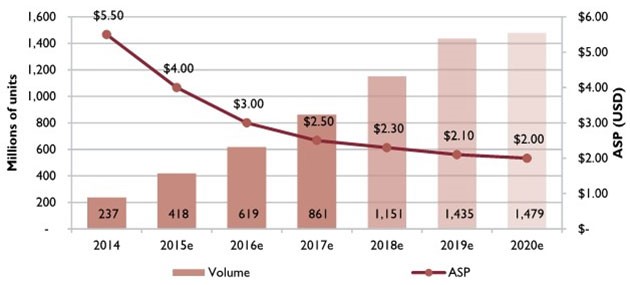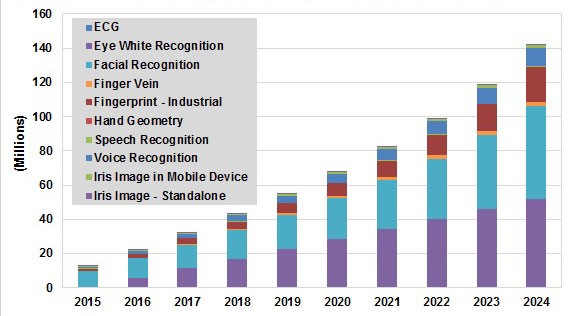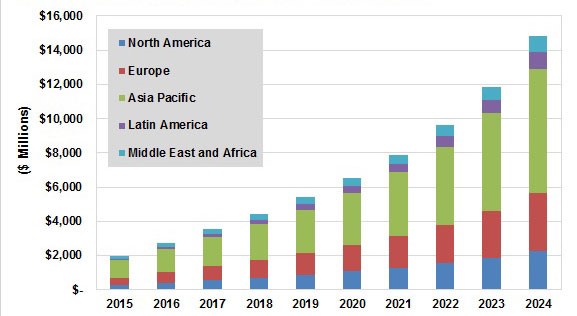Asserting that the use of biometric data is an absolute novelty could be considered naïve, especially for their employment in privacy and security protection. If on the one hand mobile phones led us in the era of everyday biometrics, on the other hand the use of biometric scanners was already a thing in fields like government and institutions, as well as critical infrastructures such as energy plants.
The real news is that, today, expectations have been confirmed and biometric devices will be one of the technological advancements that will impact security industry the most, rising security professionals’ degree of awareness and strengthening the accuracy of systems incredibly, in particular in authomated recognition.
Facts and figures.
During the period 2016-2025, biometric industry is expected to grow at a CARG of 17.06%, with a 400% increase of the overall value. The widespread distribution in a number of sectors that are not linked to risk management has been the base for a positive trend that has deeply changed the way costumers/users/patients are experiencing banks, healthcare institutions and telecommunications.
Fingerprint sensors is the most employed technology at the moment, and is also the one that pushed the development of the industry. From 2014, the continuous growth of orders caused a rapid decrease of average costs, introducing scanners even in the cheapest devices, e.g. entry level mobile phones.

However, other biometric sensors are getting more and more appealing for investors and developers. While fingerprint scanners are expected to keep their market shares, the future belongs to iris and facial recognition, that in the period 2019-2024 may double their presence in the market.

The growth will be global and will involve all the regions in a massive investment in the sector, so as to confirm that this relatively young technology was born to change our lives.




